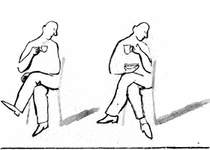- Dla kandydatów
- Dla studentów
- Informacje dla studentów I roku
- Informacje ogólne
- Informator o studiach
- Organizacja roku
- Zarządzenia Prodziekana ds. studenckich
- Kolokwia i egzaminy
- Prace i egzaminy dyplomowe
- Materiały dydaktyczne
- Pracownie
- Pracownia Projektów Studenckich
- Zespołowe projekty studenckie
- Oprogramowanie
- Konta i hasła w sieci studenckiej
- Studia doktoranckie
- Studia podyplomowe
- Samorząd, koła, kluby, chór
- Stypendia i sprawy socjalne
- Oferty pracy
- Dla pracowników
- Dla gości
- Badania
- Rada Naukowa Dyscypliny Nauki Fizyczne
- Kierunki badań
- Priorytetowy Obszar Badawczy II IDUB
- Realizowane projekty
- Sekcja ds. Obsługi Badań
- Seminaria i konwersatoria
Konwersatorium im.J.Pniewskiego i L.Infelda
- Algebry operatorów i ich zastosowania w fizyce
- Środowiskowe Seminarium Fizyki Atmosfery
- Seminarium Zakładu Biofizyki
- Seminarium z fizyki biologicznej i bioinformatyki
- Seminarium Fizyki Ciała Stałego
- Multimedialne seminarium z ekono- i socjofizyki
- Exact Results in Quantum Theory
- Środowiskowe Seminarium Fotoniczne
- Seminarium Fotoniki
- Seminarium Zakładu Fotoniki
- Seminarium Gamma
- Seminarium "High Energy, Cosmology and Astro-particle physics (HECA)"
- Środowiskowe Seminarium z Informacji i Technologii Kwantowych
- Seminarium Fizyki Jądra Atomowego
- Seminarium fizyki litosfery i planetologii
- Seminarium Fizyki Materii Skondensowanej
- Seminarium "Modeling of Complex Systems"
- Seminarium nauk o widzeniu
- Seminarium "Nieliniowość i Geometria"
- Seminarium Optyczne
- Soft Matter and Complex Systems Seminar
- String Theory Journal Club
- Seminarium Koła Struktur Matematycznych Fizyki
- Seminarium "Teoria cząstek elementarnych i kosmologia"
- Seminarium KMMF "Teoria Dwoistości"
- Seminarium Teorii Względności i Grawitacji
- Seminarium "The Trans-Carpathian Seminar on Geometry & Physics"
- Seminarium Fizyki Wielkich Energii
- Konferencje
- Publikacje
- Research Highlights
- Optyka na Uniwersytecie Warszawskim
- Wydział
- Misja i strategia
- Władze Wydziału
- Zarządzenia Dziekana
- Zarządzenia Prodziekana ds. studenckich
- Struktura organizacyjna
- Historia Wydziału
- 90 lat Wydziału Fizyki
- 100 lat Wydziału Fizyki
- Fizykoteka – Wirtualne Muzeum Wydziału Fizyki UW
- Dziekanat
- Rada Wydziału
- Jakość kształcenia
- Stopnie i tytuły naukowe
- Nagrody Wydziału Fizyki
- Biblioteka
- Ośrodek Komputerowy
- Pracownicy i doktoranci
- Zamówienia publiczne
- Rezerwacja i wynajem sal
- Oferty pracy
- Osoby
- Zapraszamy
- Media
Konwersatorium im. Jerzego Pniewskiego i Leopolda Infelda
2018/2019 | 2019/2020 | 2020/2021 | 2021/2022 | 2022/2023 | 2023/2024 | 2024/2025
Informacje na temat wcześniejszych spotkań dostępne są tutaj:
2019-06-03 (Poniedziałek)
prof. John Gregg (University of Oxford)
Magnon-inspired novel computing paradigms
Magnonics is a prime contender for breaking the heat-induced log-jam that has paralysed computing speed for over a decade. It offers the triple selling points of ultra-low power dissipation, enormous potential speed and ultimate nanoscale realisation. Already, promising magnonic logic gate architectures are reported as performing very favourably. Conventional electronics is here to stay, so any such magnonic information processor will sit as a high-performance computing island in a sea of silicon infrastructure. Low power magnonic-electronic interfaces are already under development. However, the lure of magnonic computing goes far beyond the banal copying of conventional computing architecture and magnonic devices already exist that can perform functions which silicon cannot emulate. Rather than allowing hardware development to remain enslaved to software demands, Magnonics offers the possibility of entirely novel computing paradigms that maximally exploit its unusual capabilities. One such example is its potential for removing the traditional divide between analogue and digital computing to combine the power and speed of the former with the versatility of the latter.
Professor Gregg refused our request to record the lecture
Professor Gregg refused our request to record the lecture
2019-05-13 (Poniedziałek)
prof. Pavel Kroupa (University of Bonn and Charles University in Prague)
Detecting dark matter
Neither the standard model of particle physics nor direct detection experiments have yielded any need nor any evidence for the existence of cold or warm dark matter particles. These are only hypothesised to exist if general relativity is extrapolated from the Solar-system scale to galaxies and beyond. I will discuss the possibility of confirming the existence of such dark matter particles using Chandrasekhar dynamical friction. Explicit test cases are the satellite galaxies of the Milky Way, the M81 group of galaxies and Hickson compact groups. The observed highly symmetric arrangement of matter on Mpc scales in the Local Group remains entirely unexplained by current cosmological and dynamical theory. The evidence gathered consistently and unanimously shows that dark matter particle cannot be present.
2019-04-15 (Poniedziałek)
prof. Rudolf Grimm (Institute for Quantum Optics and Quantum Information, Austrian Academy of Sciences, Innsbruck, Austria)
"Ultracold fermions"
In atomic gases, cooled down to temperatures in the nanokelvin range, quantum statistics dominates the macroscopic behavior. While bosonic statistics leads to the textbook phenomenon of Bose-Einstein condensation, macroscopic quantum behavior in fermionic systems manifests itself in more subtle ways, e.g. by pairing of atoms and the emergence of superfluidity. In the laboratory, ultracold fermionic quantum gases offer superb control of confinement and interactions and thus provide a unique experimental test bed for the investigation of fundamental interaction phenomena in condensed-matter systems. In this colloquium, I will first give a brief review on how the field of ultracold fermions developed over the past two decades. Then I will present a few examples of recent research in Innsbruck, related to superfluidity in Fermi gases, the behavior of quasiparticles, phase separation effects, and the search of novel superfluid states.
2019-03-25 (Poniedziałek)
prof. Robert Iskander (Politechnika Wrocławska)
Fizyka oka ludzkiego w XXI wieku
Physics of a human eye in XXI century
Oko ludzkie nie jestem system statycznym, lecz skomplikowanym, dynamicznym układem optycznym, w którym obserwujemy czasowe zmiany aberracji czoła fali spowodowane mikrofluktuacjami akomodacji, pulsacją oka czy też czasowymi zmianami charakterystyk powierzchni oka (np., dynamika filmu łzowego, deformacje rogówki). Pomimo zaobserwowanej dynamiki, obecna korekcja wzroku (okulary, soczewki kontaktowe czy chirurgia refrakcyjna) jest statyczna. Dopóki nie będziemy mogli zastosować dynamicznej korekcji wzroku poza laboratoriami, dynamika optyki ludzkiego oka musi być dobrze zrozumiana, aby obiektywnie ustalić optymalną korekcję statyczną. Dlatego ważne są badania nad dynamiką aberracji frontu falowego w oku ludzkim. Z drugiej strony, warto zastanowić się, czy idealnie skorygowany układ optyczny oka, na przykład, za pomocą optyki adaptatywnej będzie najlepszym rozwiązaniem w procesie widzenia. Minęło ponad 50 lat od czasu pracy Lohmanna i Parisa, którzy badali wpływ drgań rozogniskowania w idealnym systemie optycznym. Co ciekawe, odkryli, że zintegrowana jakość obrazu umieszczonego poza ogniskiem wzrasta w obecności wibracji rozogniskowania. Obecność takiego mechanizmu w oku była od lat spekulowana przez prelegenta. Ostatnio wykazaliśmy eksperymentalnie, że zarówno symulowana jakość obrazu siatkówkowego, jak i eksperymentalnie zmierzona ostrość wzroku poprawiają się, gdy wibracje rozogniskowania są dodawane do niemiarowego oka. Konwersatorium zakończy otwarte dyskusyjne pytanie: czy naturalnie występująca w oku mała wartość rozogniskowania przyczynia się do lepszego widzenia?
2019-02-25 (Poniedziałek)
Prof. Claudia Draxl (Humboldt University, Berlin)
From electronic-structure theory to data-driven science
Density-functional theory and methods beyond provide reliable tools to compute, analyze, and understand a large variety of materials and their properties. Making use of these methods in high-throughput studies has become a popular branch of our scientific ecosystem, on the search for advanced materials with tailored properties and novel functions. For successfully exploring the chemical compound space, new data-mining tools need to be developed for recognizing similarities and finding structure, trends and anomalies in the data. In this talk, I will address the question how to proceed from the third to the fourth paradigm of materials research.
2019-01-14 (Poniedziałek)
dr Agata Cygan (Faculty of Physics, Astronomy and Informatics, Nicolaus Copernicus University in Toruń)
Ultra-accurate frequency-based spectroscopy in an optical cavity
A novel one-dimensional CMDS method (cavity mode-dispersion spectroscopy) based on the frequency measurement of the dispersive shift of the optical cavity modes will be presented. The method is based on measurement of only one physical quantity - the frequency that can currently be realized with a relative accuracy up to 10-18. As a result, this method is more accurate than all other spectroscopic techniques and has the ability to easily reference the measured spectrum to the atomic frequency standard. Among numerous potential applications the most important is contemporary atmospheric research where even small systematic errors of data used to interpret measurements may lead to contradictory conclusions. The new method may be also crucial for metrology, ultra-accurate measurements of molecular structure and isotopic abundances, study of exoplanet atmospheres and search for extraterrestrial life, as well as quantum electrodynamics tests and search for phenomena beyond the Standard Model.
2018-12-17 (Poniedziałek)
Prof. Krzysztof Pachucki (Faculty of Physics, University of Warsaw)
Probing nuclear structure by the atomic spectroscopy
The atomic nucleus is fifteen orders of magnitude smaller then typical atomic volume. Nevertheless, precise atomic spectroscopy gives access to electromagnetic couplings of nuclei such as the charge radius, the polarizability and the magnetic moment. One may expect that these nuclear properties shall not depend on the atomic states or on the flavor of the atomic lepton. However, it is not the case, what may signal the presence of unknown physics. I will describe the current knowledge of the proton and deuteron charge radius determination and present recent results for the neutron- and proton-halo nuclei.
2018-10-29 (Poniedziałek)
prof. Viatcheslav Mukhanov (Ludwig Maximilian University of Munich)
Quantum Universe: from Subatomic to Galactic Scales
Status of modern cosmology will be reviewed and it will be explained how the predictions made about 40 years ago were fully confirmed in the recent Cosmic Microwave Background measurements.
2018-10-15 (Poniedziałek)
Prof. Czesław Radzewicz and dr hab. Katarzyna Krajewska (Faculty of Physics, University of Warsaw)
Nobel Prize in Physics 2018: Towards the shortest and the most intense laser pulses
Nobel Prize in Physics 2018 has been awarded for groundbreaking inventions in the field of laser physics; one of them being the Chirped Pulse Amplification (CPA). The technique has been invented by Donna Strickland and her then PhD advisor Gérard Mourou, and published in Strickland’s first research paper (D. Strickland and G. Mourou, Opt. Commun. 56 (1985) 219). It has enabled a new generation of tabletop lasers that produce very short pulses of intense light. Such light interacts with matter in nonlinear ways, which has opened new physical regimes of experimental and theoretical explorations. Specifically, high-order harmonic generation has been discovered, leading recently to the development of attoscience. Another spectacular application of the CPA-based systems is the ability to directly accelerate charged particles by means of laser light. These and other physical examples of strong laser light applications will be discussed, none of which would be possible without the invention of the CPA.







